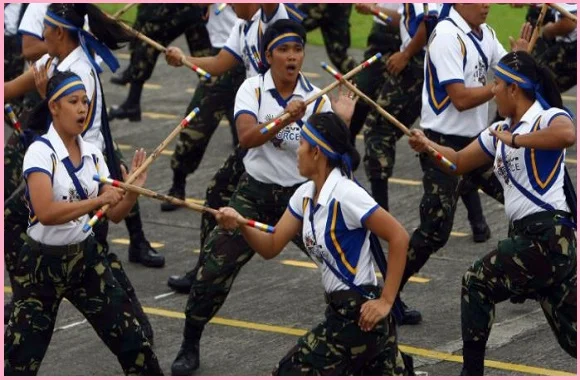Arnis is a martial art that was developed in the Philippines. It is primarily focused on self-defense. There are many different schools of thought for these techniques, but they all share some similarities.
It is believed that the practice of Arnis sports originated with indigenous people in Southeast Asia and was made popular by Filipino communities in areas such as Luzon, Visayas, and Mindanao.
History of Arnis
It is a Filipino martial art developed in the Philippines more than a century ago by Cesar V. Honorato. His students, like the late Dan Inosanto, have carried the art to other countries. It’s a type of Chess Boxing sports.
External links Category: Unarmed martial arts Category: Arnis Category: Martial arts in the Philippine National Register of Historic Places listings in Delaware County, Indiana
__NOTOC__ This is a list of the National Register of Historic Places listings in Delaware County, Indiana Arnis is a Filipino martial art developed in the Philippines more than a century ago by Cesar V. Honorato. His students, such as the late Dan Inosanto, have carried the art to other countries.
Some short information about Arnis
A short history of the Kali, or Eskrima is given below.
Also known as Kali and Eskrima
Hardness: Handheld weapons, full contact
Focus: Stick fighting, Knife fighting, Sword fighting, and unarmed combat
Country of Origin: Philippines
Parenthood: Fencing, Silat
Olympic Sport: No.
Rules of Arnis sports
Category: Sports in the Philippines
Category: Sports in Delaware County, Indiana
19th century in the Philippines
Category: History of Delaware County, Indiana
The rules of Arnis sports, also known as Eskrima or Kali, can be summarized as follows:
- Equipment: Arnis is a Filipino martial art that typically involves the use of sticks, knives, or bladed weapons. Participants use rattan sticks, usually about 26 to 30 inches in length, as the primary training and sparring weapon.
- Strikes and techniques: Arnis emphasizes the use of striking techniques, including single strikes, combinations, and counters. Practitioners learn various strikes, thrusts, blocks, and disarms, using both single and double sticks.
- Sparring formats: Arnis can be practiced in various sparring formats, such as single-stick sparring, double-stick sparring, or knife sparring. Practitioners engage in controlled combat, aiming to score points through clean strikes while maintaining proper technique, control, and respect for the opponent’s safety.
- Scoring system: Points are awarded based on successful strikes delivered to valid target areas, typically the head, body, arms, and legs. Strikes that demonstrate power, accuracy, and control are more likely to score points. Judges or referees keep track of the points earned by each participant.
- Protective gear: In competitive Arnis, participants wear protective gear to ensure safety during sparring. This may include headgear, mouthguards, hand wraps, forearm guards, and groin protectors.
- Referee and officials: Matches are overseen by a referee and officials who enforce the rules, ensure safety, and score the bout. They ensure fair play, monitor the competitors’ technique, and may issue warnings, penalties, or disqualifications for rule violations or unsportsmanlike conduct.
- Sportsmanship and respect: Arnis emphasizes the values of sportsmanship, discipline, and respect for one’s opponent.
Participants should familiarize themselves with the specific rules provided by their instructor, school, or the governing body overseeing the competition.
Equipment:
An investigation is a relationship between the quality of care and the quality of life of patients with schizophrenia and schizoaffective disorder.
The equipment used in Arnis sports, also known as Eskrima or Kali, can be summarized as follows:
- Sticks: Arnis primarily involves the use of sticks, typically made from rattan, a lightweight and durable material. The sticks are usually around 26 to 30 inches in length and are used for training, sparring, and practicing techniques.
- Training Weapons: In addition to sticks, practitioners may also use training weapons made from other materials such as foam, plastic, or wood. These training weapons allow for safe practice while simulating the weight and feel of real weapons.
- Knives: Arnis training may involve the use of knives, including training knives or dull-bladed knives specifically designed for practice and sparring. Knife techniques are taught to develop precision, footwork, and defense skills.
- Protective Gear: Participants wear protective gear to ensure safety during training and sparring sessions. This may include headgear, mouthguards, hand wraps, forearm guards, groin protectors, and, in some cases, body armor.
- Training Bags: Training bags or striking pads may be used to practice strikes, punches, and kicks. These bags provide resistance and help develop power, accuracy, and technique.
- Training Dummies: Some Arnis practitioners use training dummies, which are wooden or padded figures that simulate human opponents. These dummies can be used for solo training, focusing on specific techniques, strikes, and defenses.
- Mats or Flooring: Arnis training may take place on mats or specialized flooring to provide cushioning and reduce the risk of injury during falls or throws.
It’s important to note that the specific equipment used in Arnis can vary depending on the training style, instructor, and the focus of the practice session.
In conclusion
There are two types of Arnis as a sport. The first system is used internationally by the World Eskrima Kali Arnis Federation (WEKAF), recognized in 1989.
The second is the ARPI system, recognized in 1986. It was used most during the 2005 Asian Games.
Read also more sports
and more










